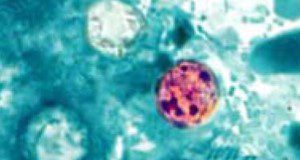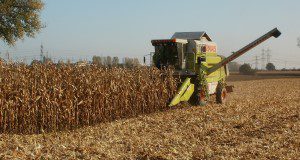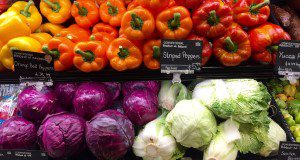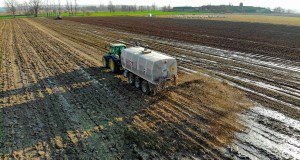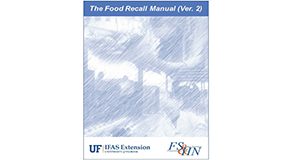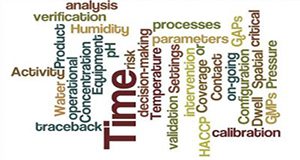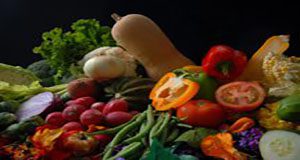Planning is the key to successful grove establishment, maintenance, and production. Developing a detailed infrastructure description and plan, cultural program, and financial and marketing plan for a new or existing grove with a new fruit crop will save you time and money and help minimize mistakes. Prospective growers should compile and analyze information needed to select a grove site, establish the needed infrastructure, and develop maintenance plans for the plants and how the production will be marketed. This new 15-page publication of the UF/IFAS Horticultural Sciences Department presents an outline of the type of information growers need when establishing a tropical fruit grove or contemplating management or modification of an existing grove. Written by Jonathan Crane, Yuncong Li, Edward Evans, Fredy Ballen, and Jeff Wasielewski.
https://edis.ifas.ufl.edu/hs1387
Tag: Food Safety
COVID-19 and Food Safety FAQ: Is Coronavirus a Concern at Grocery Stores? (Mandarin Chinese)
This is the Mandarin Chinese translation of FSHN20-20/FS348, COVID-19 and Food Safety FAQ: Is Coronavirus a Concern at Grocery Stores? It provides answers to a few frequently asked questions regarding COVID-19 and grocery stores. Written by Natalie Seymour, Mary Yavelak, Candice Christian, and Ben Chapman, and published by the UF/IFAS Food Science and Human Nutrition Department.
https://edis.ifas.ufl.edu/fs391
Is Coronavirus a Concern on Fresh Produce? (Mandarin Chinese)
This is the Mandarin Chinese translation of FSHN20-22/FS350, Is Coronavirus a Concern on Fresh Produce? It provides guidance relevant to COVID-19 regarding handling and consumption of fresh produce. Written by Natalie Seymour, Mary Yavelak, Candice Christian, and Ben Chapman, and published by the UF/IFAS Food Science and Human Nutrition Department.
https://edis.ifas.ufl.edu/fs389
COVID-19 and Food Safety FAQ: Is Coronavirus a Concern with Takeout? (Mandarin Chinese)
This is the Mandarin Chinese translation of FSHN20-22/FS349, COVID-19 and Food Safety FAQ: Is Coronavirus a Concern with Takeout? It provides answers to frequently asked questions regarding COVID-19 and takeout food. Written by Natalie Seymour, Mary Yavelak, Candice Christian, and Ben Chapman, and published by the UF/IFAS Food Science and Human Nutrition Department.
https://edis.ifas.ufl.edu/fs388
COVID-19 and Food Safety FAQ: Is Coronavirus a Food Safety Issue? (Mandarin Chinese)
This is the Mandarin Chinese translation of FSHN20-18/FS341, COVID-19 and Food Safety FAQ: Is Coronavirus a Food Safety Issue? It provides guidance related to COVID-19 regarding food production, handling, and packaging. Written by Natalie Seymour, Mary Yavelak, Candice Christian, and Ben Chapman, and published by the UF/IFAS Food Science and Human Nutrition Department.
https://edis.ifas.ufl.edu/fs387
Protecting Perishable Foods During Transport by Truck and Rail
The importance of protecting perishable foods from loss of quality during transport has long been recognized. Increased recognition of the importance of the transport link in the food distribution cold chain in securing the safety of perishable foods has more recently become as well recognized.
This updated edition reflects the dynamic changes and innovations in the handling and transportation of perishable foods. Some of these include improved insulation and air movement, microprocessors for more efficient refrigeration, expert systems to control the transport environment and conserve fuel energy, and the use of telematics to monitor and control the performance of refrigerated vehicles during transit. This edition includes descriptions and recommendations for food transported over the road and by rail in marine containers, as well as in railcars. This 214-page revision was written by J. K. Brecht, Steven A. Sargent, Patrick E. Brecht, Jorge Saenz, and Leonard Rodowick and published by the UF/IFAS Horticultural Sciences Department in cooperation with the USDA AMS Transportation Services Division.
http://edis.ifas.ufl.edu/hs1328
Preventing Foodborne Illness: Cyclosporiasis
Cyclosporiasis is an intestinal illness caused by the microscopic parasite Cyclospora cayetanensis. People can become infected with Cyclospora by consuming food or water contaminated with the parasite. People living or traveling in countries where cyclosporiasis is endemic may be at increased risk for infection. This 6-page publication is part of the Preventing Foodborne Illness series and describes symptoms and strategies for cyclosporiasis prevention for farmers, restaurants and retailers, and consumers. This major revision was written by Christopher R. Pabst, Jaysankar De, Renée Goodrich-Schneider, and Keith R. Schneider and published by the UF/IFAS Food Science and Human Nutrition Department.
http://edis.ifas.ufl.edu/fs130
Food Safety on the Farm: Good Agricultural Practices and Good Handling Practices: Transportation
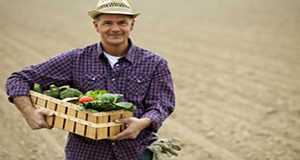
Good agricultural practices (GAPs) and good handling practices (GHPs) encompass the general procedures growers, packers, and processors of fresh fruits and vegetables should follow to ensure the safety of their product. GAPs usually address preharvest practices (i.e., in the field), while GHPs cover postharvest practices, including packing and shipping. This 3-page fact sheet covers the GAPs of transporting crops. This major revision is a part of the Food Safety on the Farm series and was written by Christopher R. Pabst, Jaysankar De, Alina Balaguero, Jessica Lepper, Renée Goodrich-Schneider, and Keith R. Schneider and published by the UF/IFAS Food Science and Human Nutrition Department.
http://edis.ifas.ufl.edu/fs151
Food Safety on the Farm: Good Agricultural Practices and Good Handling Practices: Water
Good agricultural practices (GAPs) and good handling practices (GHPs) encompass the general procedures growers, packers, and processors of fresh fruits and vegetables should follow to ensure the safety of their product. GAPs usually address preharvest practices (i.e., in the field), while GHPs cover postharvest practices, including packing and shipping. This 7-page fact sheet covers GAPs and GHPs relating to water use. This major revision is a part of the Food Safety on the Farm series and was written by Jaysankar De, Christopher R. Pabst, Jessica Lepper, Renée Goodrich-Schneider, and Keith R. Schneider and published by the UF/IFAS Food Science and Human Nutrition Department.
http://edis.ifas.ufl.edu/fs136
Food Safety on the Farm: Good Agricultural Practices and Good Handling Practices: Field Sanitation
Good Agricultural Practices (GAPs) and Good Handling Practices (GHPs) encompass the general procedures that growers, packers, and processors of fresh fruits and vegetables should follow to ensure the safety of their product. GAPs usually deal with preharvest practices (i.e., in the field), while GHPs cover postharvest practices, including packing and shipping. This 5-page fact sheet covers harvest practices associated with sanitation in the field, including basic principles for microbial food safety and control of potential hazards. This major revision is a part of the Food Safety on the Farm series and was written by Jessica Lepper, Jaysankar De, Christopher Pabst, Renée Goodrich-Schneider, and Keith Schneider and published by the UF/IFAS Food Science and Human Nutrition Department.
http://edis.ifas.ufl.edu/fs160
Food Safety on the Farm: Good Agricultural Practices and Good Handling Practices: Traceback
Good Agricultural Practices (GAP) and Good Handling Practices (GHP) are voluntary audits that verify fruits and vegetables are produced, packed, handled, and stored as safely as possible to keep the risks of microbial food safety hazards at the minimal level. Good Agricultural Practices usually deal with preharvest practices (i.e., in the field), while GHPs cover postharvest practices, including packing and shipping. This 3-page fact sheet in the Food Safety on the Farm series covers GAPs and GHPs relating to traceback, or the ability to track food items, such as fresh produce, back to their source. This major revision was written by Jaysankar De, Christopher R. Pabst, Alexandra S. Chang, Renée M. Goodrich-Schneider, and Keith R. Schneider and published by the UF/IFAS Food Science and Human Nutrition Department.
http://edis.ifas.ufl.edu/fs152
Food Safety on the Farm: Good Agricultural Practices and Good Handling Practices: Manure and Municipal Biosolids
Good Agricultural Practices (GAPs) and Good Handling Practices (GHPs) encompass the general procedures growers, packers, and processors of fresh fruits and vegetables should follow to ensure the safety of their product. GAPs usually deal with pre-harvest practices (i.e., in the field), while GHPs tend to cover post-harvest practices, including packing and shipping. This 5-page entry in the Food Safety on the Farm series focuses on Good Agricultural Practices, including pathogen reduction and handling and application, to control potential hazards when working with manure and biosolids. This major revision was written by Jaysankar De, Christopher R. Pabst, Jessica Lepper, Renée M. Goodrich-Schneider, and Keith R. Schneider and published by the UF/IFAS Food Science and Human Nutrition Department.
http://edis.ifas.ufl.edu/fs150
Preventing Foodborne Illness: Yersiniosis
 Yersiniosis is an infectious disease caused by the bacterium Yersinia and is typically associated with the consumption of contaminated food or liquids. Yersiniosis is characterized by common symptoms of gastroenteritis such as abdominal pain and mild fever. The bacterium is prevalent in the environment, enabling it to contaminate water and food systems. Outbreaks of yersiniosis have been associated with improperly pasteurized milk, ready-to-eat salad mix, oysters, and more commonly with consumption of undercooked meals containing pork. Yersiniosis incidents have been reported frequently in Northern Europe, Scandinavia, and Japan, and rarely in the United States. However, the reported low incidence of Yersinia in the US food supply may be underestimated due to the long incubation time and misdiagnosis of patients with Y. enterocolitica infections, along with the inability to identify the source of infection and the fact that only serious cases are reported. This 4-page major revision, written by Christopher Pabst, Jaysankar De, Aswathy Sreedharan, Correy Jones, and Keith R. Schneider and published by the UF/IFAS Food Science and Human Nutrition Department, also describes long-term effects and complications of yersiniosis, members of the population most at risk, and prevention methods.
Yersiniosis is an infectious disease caused by the bacterium Yersinia and is typically associated with the consumption of contaminated food or liquids. Yersiniosis is characterized by common symptoms of gastroenteritis such as abdominal pain and mild fever. The bacterium is prevalent in the environment, enabling it to contaminate water and food systems. Outbreaks of yersiniosis have been associated with improperly pasteurized milk, ready-to-eat salad mix, oysters, and more commonly with consumption of undercooked meals containing pork. Yersiniosis incidents have been reported frequently in Northern Europe, Scandinavia, and Japan, and rarely in the United States. However, the reported low incidence of Yersinia in the US food supply may be underestimated due to the long incubation time and misdiagnosis of patients with Y. enterocolitica infections, along with the inability to identify the source of infection and the fact that only serious cases are reported. This 4-page major revision, written by Christopher Pabst, Jaysankar De, Aswathy Sreedharan, Correy Jones, and Keith R. Schneider and published by the UF/IFAS Food Science and Human Nutrition Department, also describes long-term effects and complications of yersiniosis, members of the population most at risk, and prevention methods.
http://edis.ifas.ufl.edu/fs193
The Food Recall Manual (Version 2)
Any business involved in the manufacture, processing, packing, holding, or delivery of food to humans needs to understand and address food recalls. When safety concerns arise with food you are manufacturing, you have a legal and ethical responsibility to mitigate any damage to the health and wellbeing of consumers. This manual details what you need to know to effectively understand and handle a food recall. Written by Keith R. Schneider, Renee Goodrich-Schneider, Douglas A. Archer, Michelle D. Danyluk, George L. Baker, and Chris Thomas and published by the UF/IFAS Department of Food Science and Human Nutrition, February 2018.
http://edis.ifas.ufl.edu/fs108
HACCP: An Overview
HACCP is a food safety management system that is used in various segments of the food industry. The objectives of this 4-page fact sheet are to introduce the topic and to summarize the key components of a HACCP program. Written by J. A. Lepper, R. M. Goodrich-Schneider, K. R. Schneider, M. D. Danyluk and A. Sreedharan and published by the UF/IFAS Department of Food Science and Human Nutrition, January 2018.
http://edis.ifas.ufl.edu/fs122
Food Safety Tips for the Holiday Season
Food is always an important part of holiday festivities, but holiday meals can take a turn for the worse if food safety is not properly practiced when preparing and cooking the food. This 7-page factsheet provides information about safe food practices for the holidays. Written by Soohyoun Ahn, Jessica A. Lepper, and Keith R. Schneider and published by the UF/IFAS Department of Food Science and Human Nutrition, November 2017.
http://edis.ifas.ufl.edu/fs260
Guidelines for Operation and Usage of County Kitchens in the State of Florida
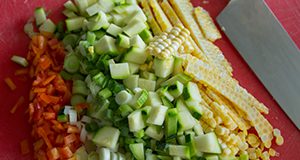 In recent years, many people have become interested in developing small food businesses. Using county kitchens to make food products for sale may seem very attractive. However, because of different local, state, and federal regulation requirements, there may be some confusion and unresolved conflicts among different parties as to the legalities and practicalities involved. This 3-page fact sheet provides guidelines and advice for Florida Extension personnel to use when determining the appropriate usage for their kitchen facilities, based on a situation in one Florida county. The publication covers utilization, roles and responsibilities, and potential liability issues relevant to the use of county kitchens, providing some potential solutions to conflicts for all parties. Written by Amarat Simonne, Tim Wilson, Geralyn Sachs, Joanne Cooper, Brenda Morris, Steven von Bodungen, and Liz Felter, and published by the UF Department of Family, Youth and Community Sciences, August 2016.
In recent years, many people have become interested in developing small food businesses. Using county kitchens to make food products for sale may seem very attractive. However, because of different local, state, and federal regulation requirements, there may be some confusion and unresolved conflicts among different parties as to the legalities and practicalities involved. This 3-page fact sheet provides guidelines and advice for Florida Extension personnel to use when determining the appropriate usage for their kitchen facilities, based on a situation in one Florida county. The publication covers utilization, roles and responsibilities, and potential liability issues relevant to the use of county kitchens, providing some potential solutions to conflicts for all parties. Written by Amarat Simonne, Tim Wilson, Geralyn Sachs, Joanne Cooper, Brenda Morris, Steven von Bodungen, and Liz Felter, and published by the UF Department of Family, Youth and Community Sciences, August 2016.
http://edis.ifas.ufl.edu/fy1469
The Cost of Food Safety
 This new publication discusses the costs and long-term benefits associated with the implementation of food safety programs. This 5-page fact sheet covers the history of HACCP, costs associated with the application of food safety programs, reasons to improve food safety, and the financial impact of foodborne illnesses. Written by Annelys Hessing, Renée Goodrich Schneider, Alan Gutierrez, Rachael Silverberg, Michael S. Gutter, and Keith R. Schneider, and published by the UF Department of Food Science and Human Nutrition, October 2015.
This new publication discusses the costs and long-term benefits associated with the implementation of food safety programs. This 5-page fact sheet covers the history of HACCP, costs associated with the application of food safety programs, reasons to improve food safety, and the financial impact of foodborne illnesses. Written by Annelys Hessing, Renée Goodrich Schneider, Alan Gutierrez, Rachael Silverberg, Michael S. Gutter, and Keith R. Schneider, and published by the UF Department of Food Science and Human Nutrition, October 2015.
http://edis.ifas.ufl.edu/fs270
Seguridad Alimentaria: Crucigrama de alimentos do alto riesgo
 Algunos alimentos pueden causar más enfermedades alimentarias que otros. La leche ó jugos no pasteurizados no son seguros para consumir. Alimentos que no han sido cocinados, como lo son los huevos crudos ó a medio cocinar son particularmente riesgosos.
Algunos alimentos pueden causar más enfermedades alimentarias que otros. La leche ó jugos no pasteurizados no son seguros para consumir. Alimentos que no han sido cocinados, como lo son los huevos crudos ó a medio cocinar son particularmente riesgosos.
This 2-page fact sheet is the Spanish language version of Food Safety: High-Risk Foods Crossword. Written by Jennifer Hillan and Linda B. Bobroff, and published by the UF Department of Family Youth and Community Sciences, June 2015. (Photo Credit: Catherine Yeulet/iStock/Thinkstock)
http://edis.ifas.ufl.edu/fy1170
Impacto de las variedades de tomate y su estado de madurez en la susceptibilidad a Salmonella
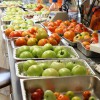 De 1998 a 2007 la fruta fresca, verdura, especias y nueces fueron comúnmente asociados con brotes de gastroenteritis (Batz, Hoffman, y Morris 2011). Salmonella se ha convertido en uno de los patógenos humanos más problemáticos asociado a productos frescos, nueces y a los alimentos que contienen esos ingredientes (Batz, Hoffman, y Morris 2011; deWaal, Tian, y Plunkett 2009). Esta hoja informativa fue producida para proveer información actualizada sobre las prácticas de producción de tomate y sus asociaciones con Salmonella. Esta información es útil para los Agentes de Extensión Agraria en sus programas de educación sobre cultivos hortícolas. This 3-page fact sheet is the Spanish language version of Impact of Tomato Varieties and Maturity State on Susceptibility of Tomatoes to Salmonella (SS627). It was written by Massimiliano Marvasi, Max Teplitski, and George Hochmuth, and published by the UF Department of Soil and Water Science, February 2015. (Photo: Max Teplitski)
De 1998 a 2007 la fruta fresca, verdura, especias y nueces fueron comúnmente asociados con brotes de gastroenteritis (Batz, Hoffman, y Morris 2011). Salmonella se ha convertido en uno de los patógenos humanos más problemáticos asociado a productos frescos, nueces y a los alimentos que contienen esos ingredientes (Batz, Hoffman, y Morris 2011; deWaal, Tian, y Plunkett 2009). Esta hoja informativa fue producida para proveer información actualizada sobre las prácticas de producción de tomate y sus asociaciones con Salmonella. Esta información es útil para los Agentes de Extensión Agraria en sus programas de educación sobre cultivos hortícolas. This 3-page fact sheet is the Spanish language version of Impact of Tomato Varieties and Maturity State on Susceptibility of Tomatoes to Salmonella (SS627). It was written by Massimiliano Marvasi, Max Teplitski, and George Hochmuth, and published by the UF Department of Soil and Water Science, February 2015. (Photo: Max Teplitski)
http://edis.ifas.ufl.edu/ss629



